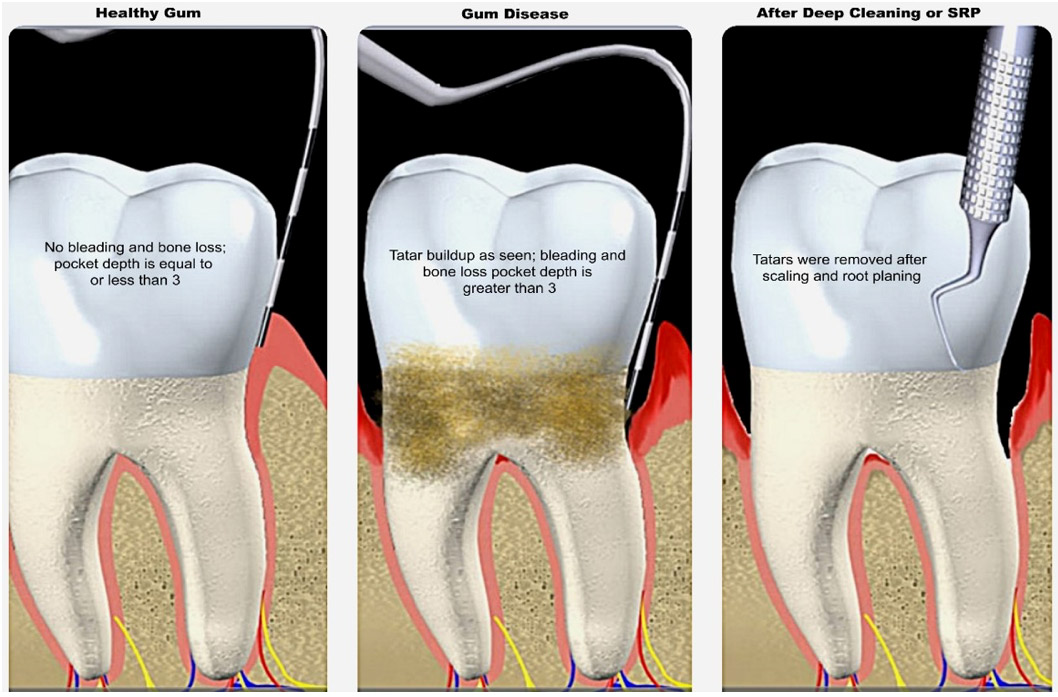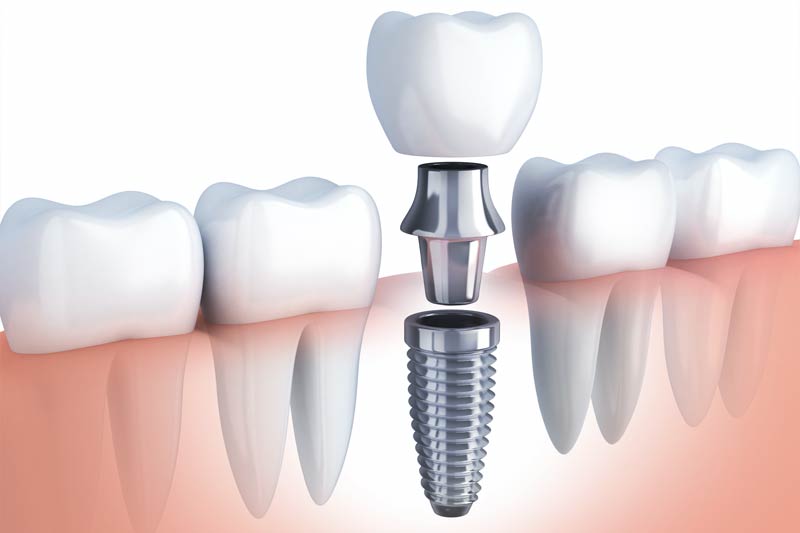Deep Cleaning or Scaling and Root Planning
What is Deep Cleaning?
A deep teeth cleaning is a procedure that removes a buildup of plaque and tartar on your teeth, reducing gum inflammation and improving gum health.
Plaque is a sticky film that forms on teeth. It contains bacteria and develops when food particles mix with saliva. You can remove plaque, which collects on teeth daily, by brushing your teeth.
Brushing, however, doesn’t remove all plaque in between your teeth. Leftover plaque calcifies or hardens, which forms tartar. Unlike plaque, you can’t remove tartar by brushing and flossing.
The accumulation of plaque or tartar can lead to gum disease. This includes gingivitis, which is inflammation of the gums. If left untreated, gingivitis can advance to periodontitis. This is a serious infection that destroys the bone that supports the teeth.

What are the advantages of deep cleaning teeth?
- stopping the advancement of gum disease
- treating a current infection and promote healing
- cleaning your teeth above and below the gumline
- eliminating bad breath caused by gum disease
- protecting the roots of your teeth
What are the disadvantages of deep cleaning teeth?
Although deep cleaning can treat gum disease, the procedure has its risks. Disadvantages of deep cleaning teeth include:
- doesn’t guarantee the reattachment of your gums to your teeth
- may cause your gums to recede
- possible infection if you have a compromised immune system
- pain and sensitivity
Pain and sensitivity are the most common side effects. Risks from deep cleaning are usually minimal and only last about 5 to 7 days, though for extensive cases, this may extend to a few weeks, months, and years.
How to reduce sensitivity after the procedure
Eating soft foods (yogurt, applesauce, or mashed potatoes) for a few days after your procedure can help reduce sensitivity. You should also avoid extremely hot or cold foods and drinks.
Taking over-the-counter pain medications like acetaminophen and ibuprofen can reduce inflammation, as well as rinsing with warm salt water. Brushing and flossing on a regular basis promote healing and reduce further gum inflammation. Use a soft bristle toothbrush at least twice per day, and floss at least once per day.

 VA Credentialed Provider
VA Credentialed Provider



